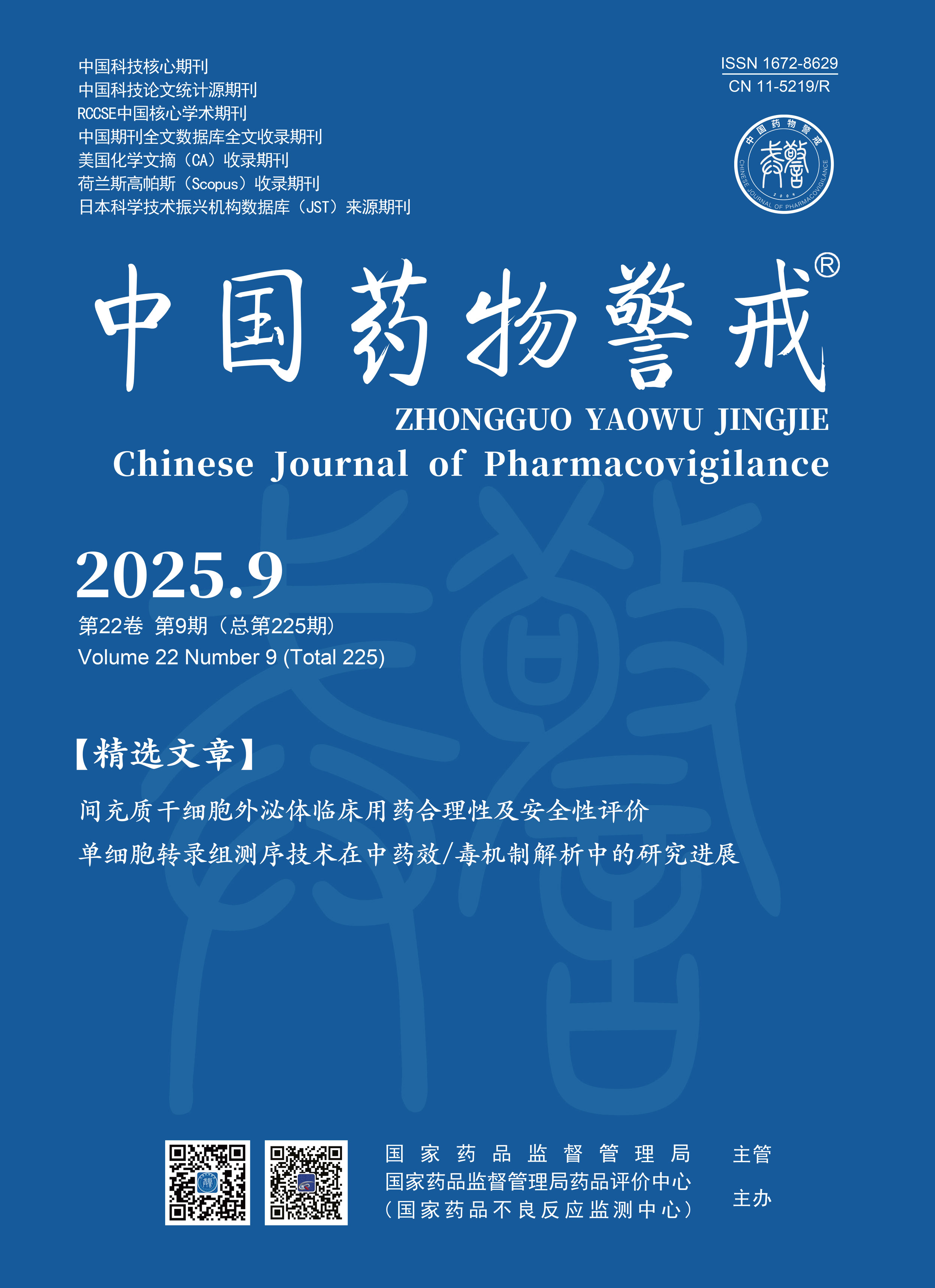|
|
Toxicity Caused by 28 Days of Repeated Intravenous Injection of Forsythoside Aglycone in Rats
QIU Deyang, TAN Yujun, WANG Dali, LI Guochao, YAO Fangfang, ZHAO Yun, DU Jiancai, LI Bin, YAO Jingchun
2025, 22(9):
994-1002.
DOI: 10.19803/j.1672-8629.20250017
Objective To observe the possible toxic reactions and reversibility in SD rats after 28 consecutive days of repeated intravenous injection of forsythoside aglycone, and to provide a reference for its clinical applications. Methods One hundred and fifty SPF-grade rats (half male and half female) were randomly divided into 5 groups according to body weight: the solvent control group, hydrocortisone positive control group (30 mg·kg-1·d-1), and low, medium and high dose forsythoside aglycone groups (4、12、40 mg·kg-1·d-1), with 30 rats in each group. The rats were given respective drugs twice a day, in the morning and afternoon and for 28 consecutive days, followed by a 28-day recovery period. During the experiment, the condition of the rats was observed, and the body weight, food intake, hematology, blood biochemistry, ophthalmology, results of urine analysis, organ weight and coefficient, and data on histopathological examination were recorded. Results After 28 days of continuous administration, the hydrocortisone positive control group was abnormal in body weight, blood biochemistry, hematology and urine tests. Histopathological examination revealed atrophy of the thymus and increased phagocytosis of lymphocytes in the cortex, with starry-sky macrophages. At the end of recovery, no abnormal results were observed in body weight, blood biochemistry, hematology or urine tests in the hydrocortisone positive control group. Histopathological examination showed that the thymus returned to normal, suggesting that the lesion was reversible. After 28 days of continuous intravenous injection of forsythoside aglycone and 28-day recovery, the rats were in stable condition, and no abnormal changes related to forsythoside aglycone were observed in body weight, food intake, urine routine indexes, hematology, coagulation indicators, serum biochemistry, serum electrolytes or results of histopathological examination. Conclusion Under the conditions of this experiment, no abnormalities related to the toxicity of forsythoside aglycone are found. Twenty-eight days of intravenous injection of forsythoside aglycone have no obvious toxicity on SD rats.
References |
Related Articles |
Metrics
|
